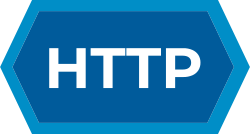HTTP/1.1 Upgrade header
The Upgrade header field is an HTTP header field introduced in HTTP/1.1. In the exchange, the client begins by making a cleartext request, which is later upgraded to a newer HTTP protocol version or switched to a different protocol. A connection upgrade must be requested by the client; if the server wants to enforce an upgrade it may send a Use with TLSOne use is to begin a request on the normal HTTP port but switch to Transport Layer Security (TLS).[1] In practice such use is rare, with HTTPS being a far more common way to initiate encrypted HTTP. The server returns a This method for establishing a secure connection is advantageous because it:
If the same resources are available from the server via both encrypted secure means and unencrypted clear means, a man-in-the-middle may maintain an unencrypted and unauthenticated connection with the client while maintaining an encrypted connection with the server. Disadvantages of this method include:
Use with WebSocketWebSocket also uses this mechanism to set up a connection with a HTTP server in a compatible way.[2] The WebSocket Protocol has two parts: a handshake to establish the upgraded connection, then the actual data transfer. First, a client requests a WebSocket connection by using the Use with HTTP/2The HTTP Upgrade mechanism is used to establish HTTP/2 starting from plain HTTP.[4]
The client starts an HTTP/1.1 connection and sends an See alsoReferences
External links
|
Portal di Ensiklopedia Dunia














